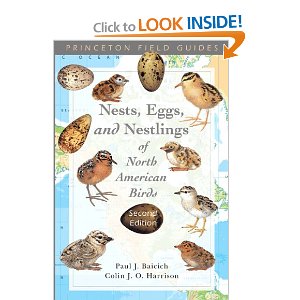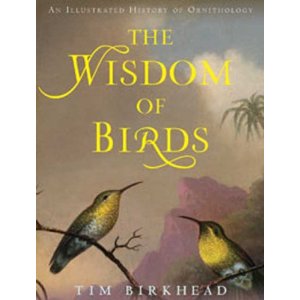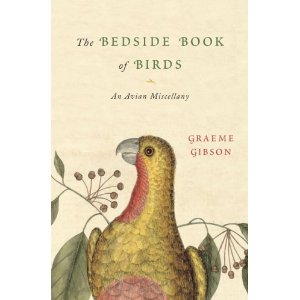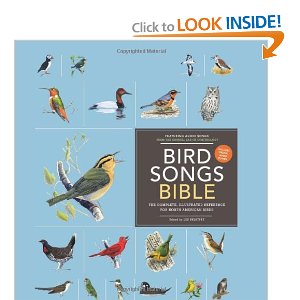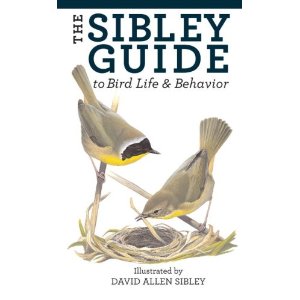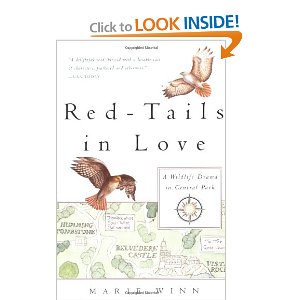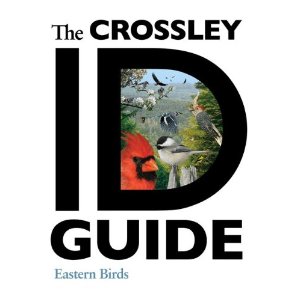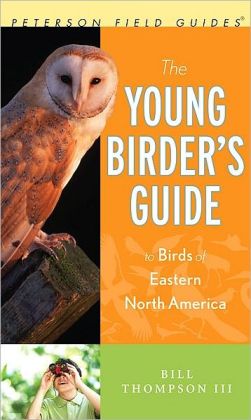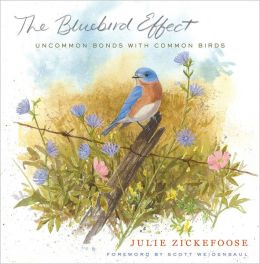Since 2017 the Trust’s Bird Conservation Team along with its partners (the Ned Smith Center for Nature and Art, Project Owlnet, and the Carnegie Museum of Natural History’s Powdermill Nature Reserve) has been working tirelessly to establish what is now the world’s second largest array of the Motus Wildlife Tracking System’s automated radio telemetry stations. Motus is a collaborative research project that uses a network of receiving stations to track the movements of birds and other small flying animals tagged with miniature radio transmitters. This cutting-edge technology has transformed our knowledge of bird migration. Watch this fascinating presentation from the Trust’s Bird Conservation Team to hear what researchers have begun to learn and how these discoveries can be shared to help further bird conservation in your community. Recorded on September 10, 2020.
Warm Reflections From 2014 to Fight the February Freeze

WAIT! If you’re a subscriber reading this in email format, before reading any further, please click on the title of the post right above in order to view the blog in the glory it was meant to have on the actual blog website.
Sometimes you will never know the value of a moment
until it becomes a memory. ~Dr. Seuss
The weary winter sun is slowly setting behind the frozen horizon, casting a serene purple glow of promise in the golden streaked sky and turning the stark white blanket of snow a rose-colored hue. The birds have already retired to their secret roosting retreats, but a wise, plump squirrel dines in pensive solitude beneath the icy bird feeder that hangs from the solemn sugar maple.
As each new year begins, I imagine it like a roller coaster slowly and almost peacefully creeping up the hill—then methodically pausing at the very top before careening downward at thrilling speeds to destinations unknown. It is in that slow deliberate climb and the renewing pause at the top — somewhere within those few quiet moments after the birds have gone to roost and before the sun ducks below the horizon —that I find it gratifying and essential to reflect on the year past.

Sometimes we just need to slow down and take some time to direct our thoughts inward, to dreams and rumination. Out of quiet reflection comes clarity, boldness for the future and preparedness for the ups and downs of the roller coaster ahead. And so as 2/14— the day of love—approaches, let’s pause beneath the maple tree to recall and stock up on some of the most beloved memories of 2014 for the Trust’s bird conservation efforts.

Rushton Farm Emerges on the Cutting Edge of Groundbreaking Agroecology Research
In December, an exciting new finding emerged from a team of University of CA, Berkeley researchers showing that organic farming yields are much closer to industrial yields than previously touted. This new research eliminates the industrial farm bias with an impressive data-set three times larger than previously used. It basically shows that organic farming yield is only 19 percent less than conventional (or industrial) farming yields. This means it is indeed possible to grow food productively while taking care of the land and leaving room for feathered creatures as well!

Furthermore, findings show that the yield gap is greatly reduced or even eliminated when agroecological practices are used. These practices are all very familiar to our very own Rushton Farm, which is now becoming a model for feeding the world while keeping bird populations healthy! Such practices harness ecological interactions and include multi-cropping (growing a variety of crops), crop rotation for soil health and promoting native beneficial insects with native wildflower habitat.
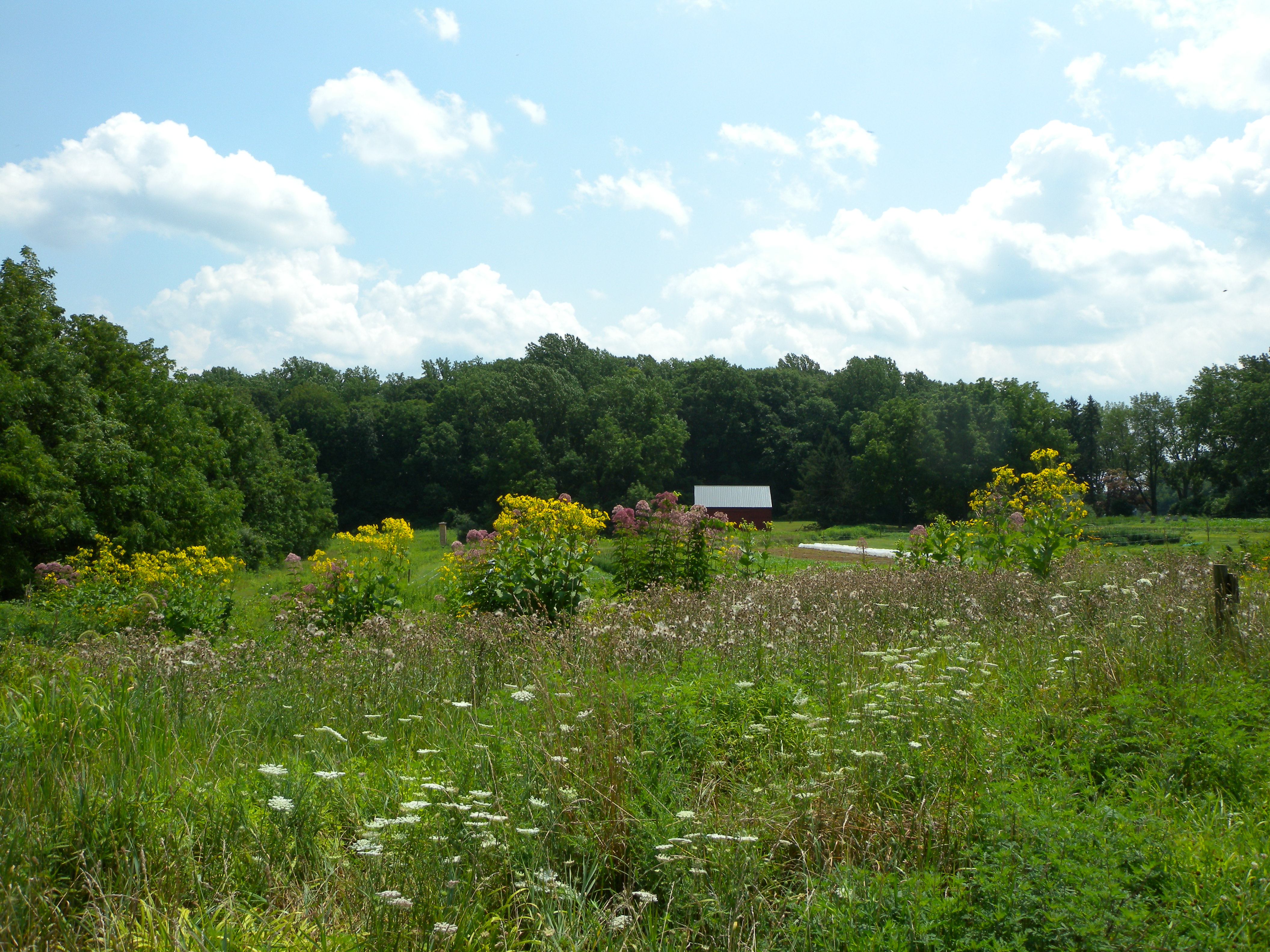



This is the kind of farming that provides resiliency to soils, the environment, our health and biodiversity. It is farming for the future rather than using synthetic chemicals and biologically harmful practices for immediate short-sighted profits. It is the only kind of farming that can hope to reverse the profoundly unsustainable impact we are having on this planet, which has lost half of its wildlife populations in 40 years— a result of habitat loss and degradation coupled with unsustainable human consumption (according to WWF’s Living Planet Report 2014).
Although the birds have spoken and we have lots of anecdotal evidence of our own, it’s exciting to have this published confirmation that we’re doing it right and setting a great example at Rushton Farm! Read more about the disappearing yield gap in the following enlightening articles.
Agroecology and the Disappearing Yield Gap
Can Organic Crops Compete With Industrial Agriculture?
Organic Nearly as Productive as Industrial Farming, New Study Says

Declining Chimney Swifts Successfully Fledge from Rushton’s Brand New Chimney Swift Tower!
One of the many projects that our Bird Conservation Team has developed is the Homeowner Bird Box Program. Through this wildly popular program, the Trust provides and installs a variety of bird boxes for homeowners, including bluebird, wren, wood duck, kestrel and screech owl boxes. Bird box experts from the Bird Conservation Team work with the homeowners to devise a plan for the best location of the bird boxes on each property. Last year, 60 bluebird boxes were installed in Willistown and beyond, successfully pumping out broods of Eastern Bluebirds, Tree Swallows, House Wrens and even some chickadees all summer long, thanks to strategic placement and homeowner cooperation in monitoring their boxes.


However, it was the charming Chimney Swift chicks that stole the show last breeding season. In response to growing research indicating that swift populations have been suffering a steep decline of 65% since the 1960s due to habitat loss, our Bird Conservation Team decided to include them in our Bird Box Program. This tiny little aerial sprite is often called a “flying cigar” because of its stubby proportions and smudge-gray color; its feet are so reduced and claws so long that instead of perching it can only cling to vertical walls of chimneys, hollow trees or caves.
After European settlement, the birds became quite adjusted to nesting in chimneys and their population increased accordingly. Unfortunately, more people cap their chimneys now and other ‘too narrow’ or ‘too slick’ modern chimneys just aren’t as good as the old brick ones for Chimney Swift nesting. Logging of old growth forests has also contributed to the decline. To help prevent Chimney Swift decline, you can either preserve your chimney or offer the birds a giant fake chimney structure, which is exactly what we did at Rushton last June.
The magnificent wooden tower, meticulously built by a dear neighbor, glowed every summer morning like a golden shrine in the verdant fields of Rushton until one day in July it became the bustling epicenter of a new family of swifts! You’d think that large structure would be occupied by a colony of swift nests, but unfortunately it’s just one breeding pair per tower. Nevertheless, the tower’s swift success is more proof that ‘if you build it, they will come,’ and humans can have a positive impact on bird conservation right in their own backyards if they wish.
Check out chimneyswift.org if you’re interested in having your own swift success story. (I apologize in advance, but all this swift success talk makes me unable to resist: ‘Cause the chimney cappers gonna cap, cap, cap, cap, cap and the loggers gonna log, log, log, log, log… but I’m just gonna build, build, build, build, build… I build a tower, I build a tower.’)



500 School Children Got Feather Prints Left on Their Hearts at the Banding Station
The main purpose of the Rushton banding station is to capture annual data on what bird species are using the preserve during migration and breeding and what effect the sustainable farm and other land management practices have on the bird populations. Our data is shared with the national bird banding database to contribute to conservation, and —perhaps just as importantly— our “field office” is shared with the public to promote local awareness and enthusiasm for the birds that travel through and dwell in our backyards.

Last year, hundreds of children visited Rushton Farm and the banding station from a variety of public and private schools including some spirited urban groups like the Melton Center’s afterschool New Directions program from West Chester and the Mighty Writers from Philadelphia. All of the groups gain an understanding of agroecology and farming with a conscience, enjoy an enlightening walk through the cool woodlands, discover the beauty and fragility of the birds up-close at the banding station and then reflect on the harmony of it all in the herb garden. The emotional impact the trip has on these children can be seen in the photos below. Some even say that the Rushton field trip is their favorite day of the school year.
The urban students to which nature is a little more unfamiliar were extra fascinated by it all and enjoyed the little wonders they discovered, even if they did endearingly experience them first from behind their cell (read:comfort) phones.
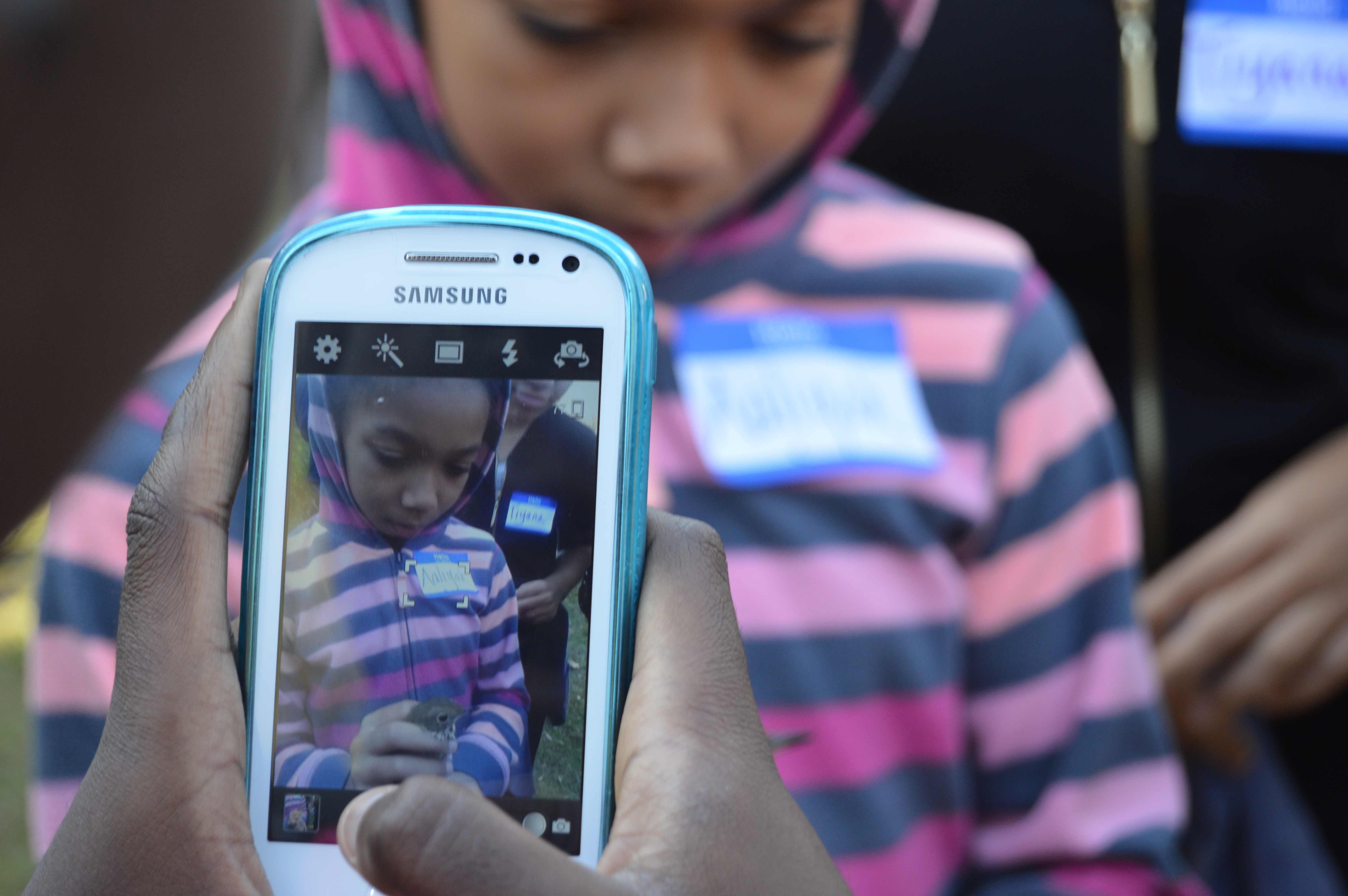












Service Students Went Wild while Helping to Create Winter Bird Habitat
Our service students are of great value to the Willistown Conservation Trust because every year they help our small staff accomplish more than it otherwise could: repairing tree cages at our preserves, weeding around the office and even planting native wildflowers. Not only do they get the job done, but they do it with a one-of-a-kind flair that makes it fun and memorable.
Last December, the Shipley students got really creative and built an original bird shelter from large branches and sticks they found around the office. The shelter is holding up well, strategically propped up against the maple tree from which the feeder hangs. The birds took to it immediately, and it has been a joy to watch them using it as a perch while they wait in line for the feeder, a shelter from the cold wind and a sanctuary from hawks that patrol the open fields. Consider building one of your own for your birds this winter!

After that hard work, the students ran wild, exploring in the native wildflower meadow. They took particular delight and fascination in the old milkweed seed pods. They opened them up and happily sprinkled them around the meadow so that it looked like it was snowing milkweed seeds! These are the moments of magic that a little free time in nature elicits for children, even in a dormant, winter landscape.



Junior Birders Connected to Nature on All New Levels
Our Jr. Birding Club meets monthly to go birding and learn about many other amazing aspects of nature including butterflies and moths, tracks and scat, native plants, bird migration, woodland ecology, farm ecology, stream health, and even bats. Through a productive combination of structured lessons , free exploration and creative expression—with birds as the backbone— our Jr. Birders gain a deep appreciation for the natural world and an understanding of the importance of conservation.

Below are photos from a few of the activities that were new last year including a native wildflower and watercolor workshop, wetland study at Ashbridge Preserve and free nature play—that neglected pastime that is so important to children’s cognitive and emotional health.




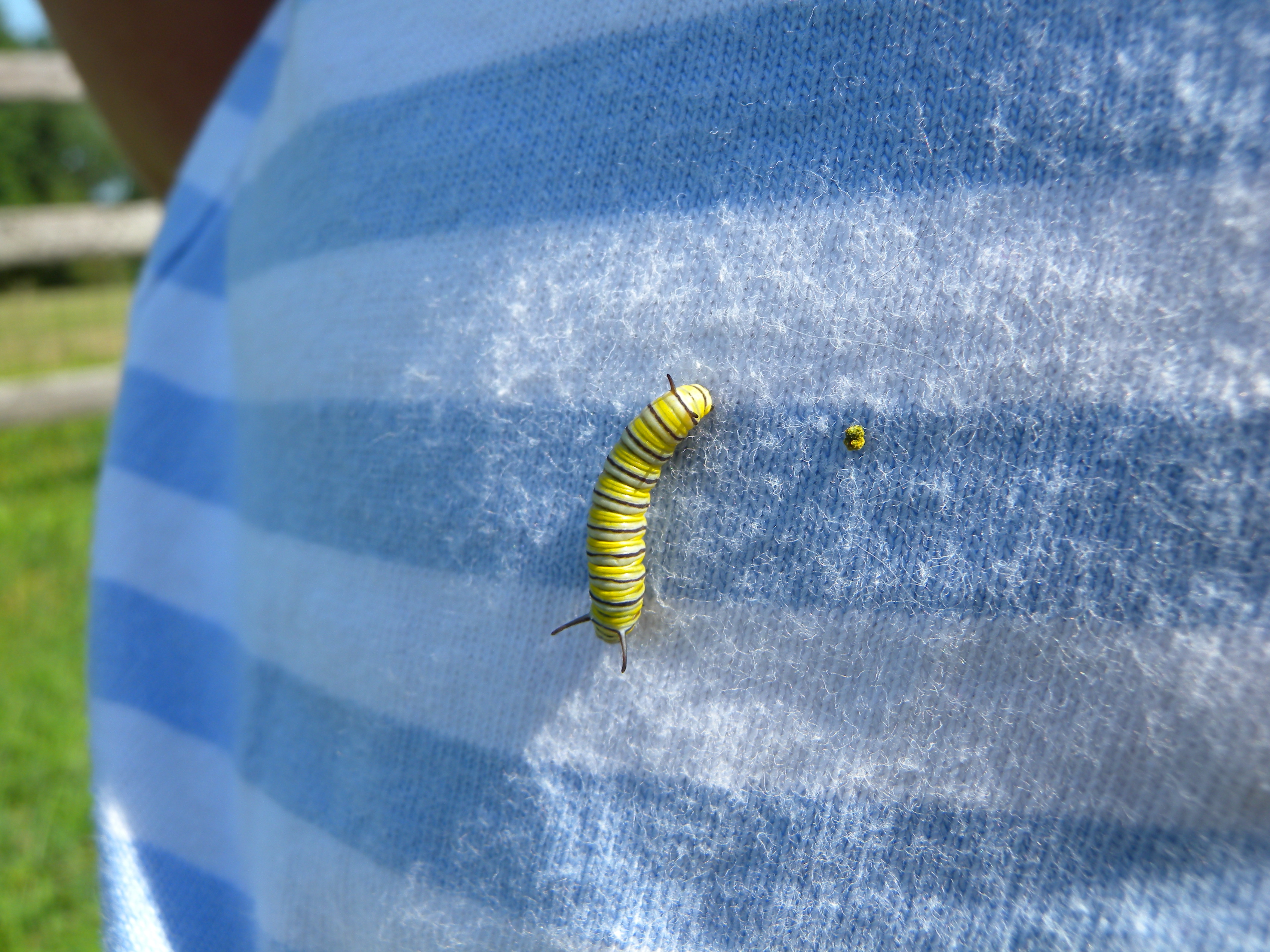






Rushton Banding Crew Tirelessly Tagged Nearly 2,000 Birds during 105 banding days
It was a great year for the banding team; the numbers of birds were up and so were the number of species! Check out the previous blog post, titled The Spirit of Autumn, to see lots more photos of our beautiful birds. Below are some photos of the highlights and favorites plus brand new species never before caught at Rushton.


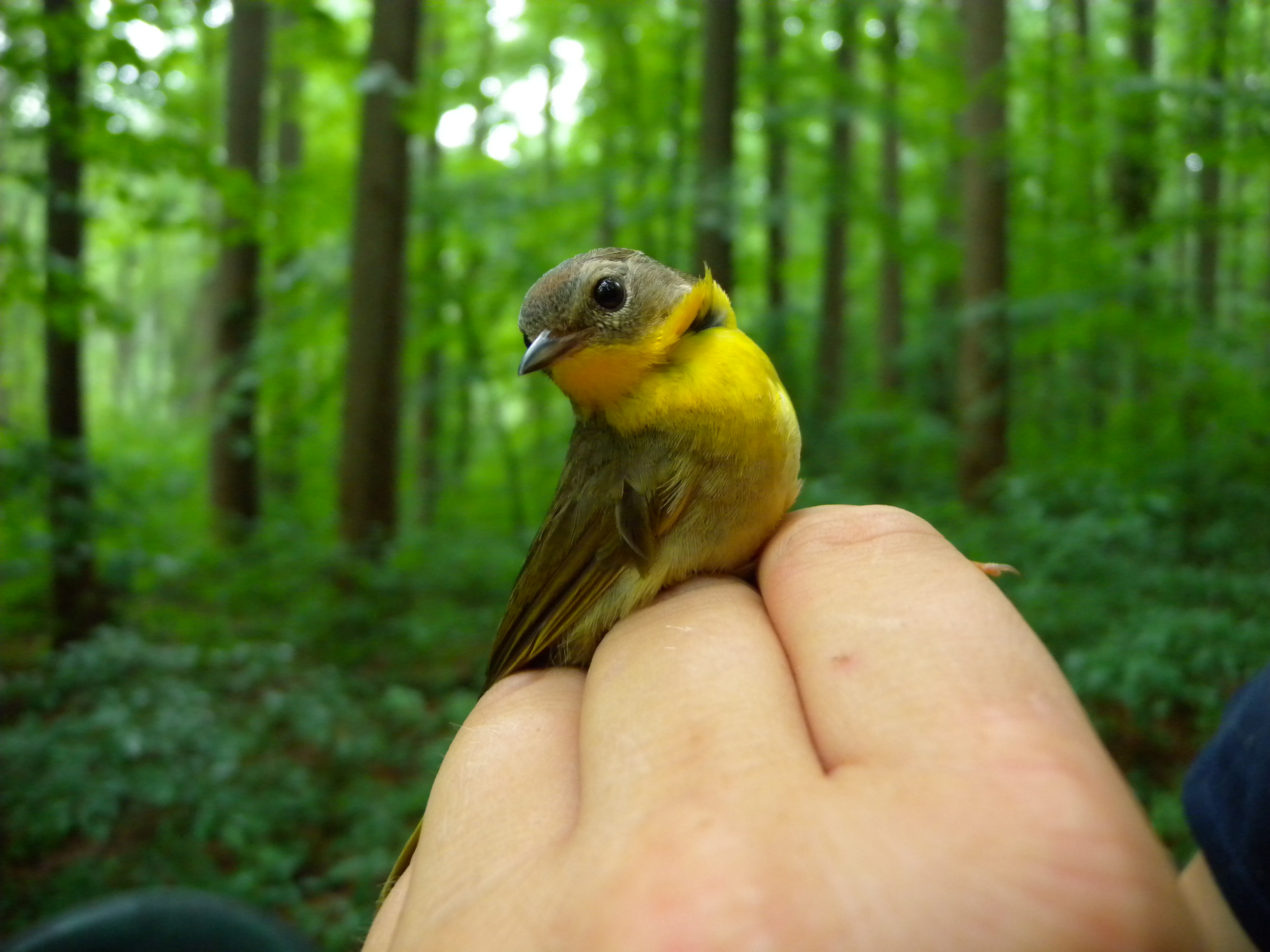



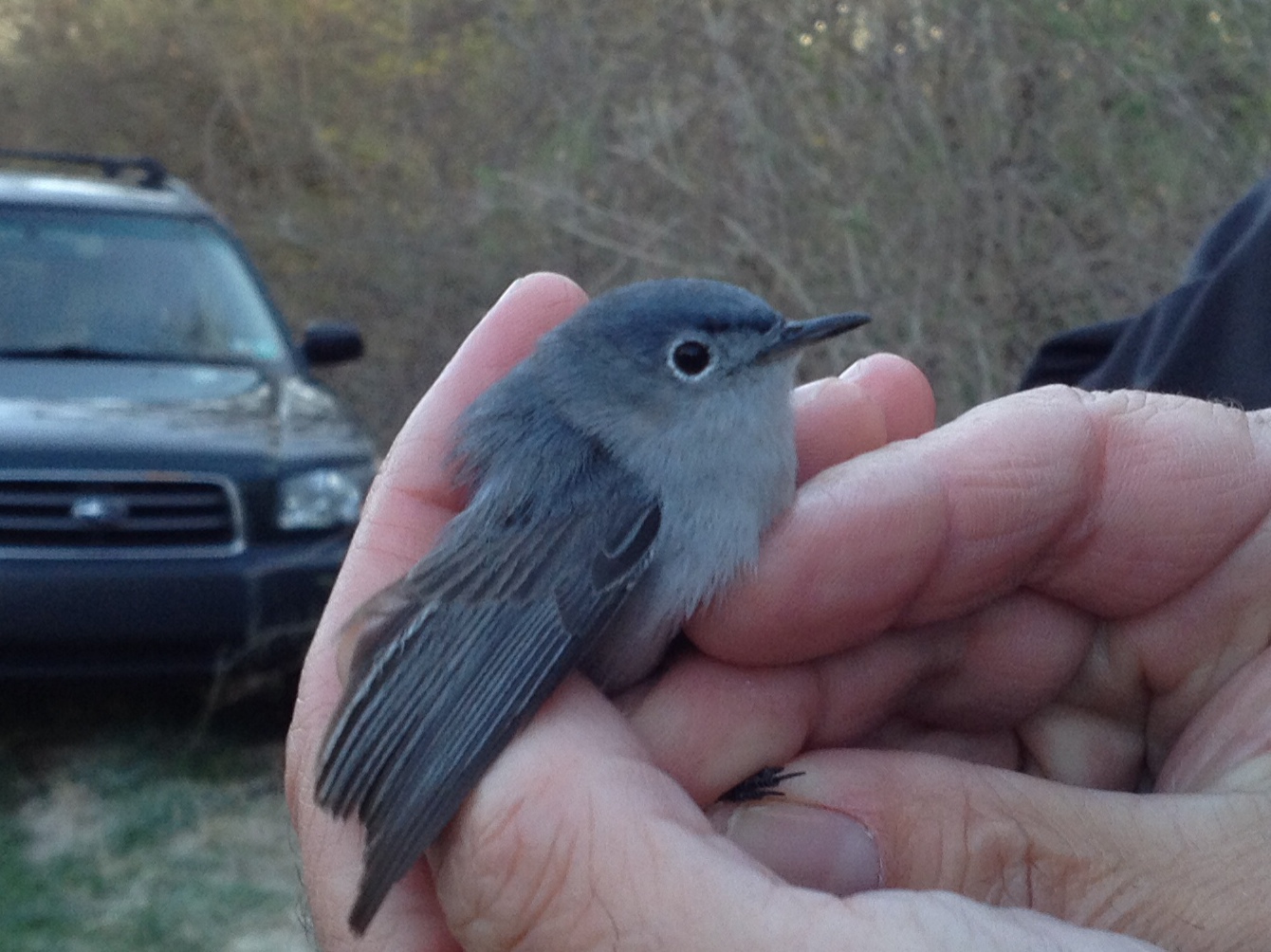



Rushton’s Saw-whet Owl Banding Station had Second-Best Year Yet
Last Fall marked Rushton’s 5th anniversary of monitoring Pennsylvania’s tiniest owls as they disperse south from their coniferous haunts as far north as Canada. In 34 nights, we captured and banded 96 new Northern Saw-whet Owls, plus caught 3 “foreign recoveries”—owls with bands given to them by other banders before they came to us. We got all of our foreign birds in November; they included two young females banded earlier that October in New York state 300-some miles away and an older (after second year) female originally banded in Wellington, Canada in 2013! We also had some exciting reports of owls we banded in years past trying out the nets at other banding stations: Valhalla, NY had one of our owls— originally banded here in October 2012— last November.

It was an unusual banding season in that the cold weather took its sweet time arriving, and the katydids were still casually singing in mid-November! Consequently, the owls were fashionably late to their own party. And then perhaps because the party got started so late, many of the owls did not travel as far south as in previous years. Most banding stations, especially those south of us—like Virginia, Maryland and Georgia— had below average years.
Not us! We had our second-best year yet! Our best was 2012 when we banded a whopping 268 saw-whets after a high-success breeding summer. In our opening year of 2010 we caught 90 birds, and 2011 and 2013 were the abysmal years of just 33 and 30 birds, respectively. We and the 130 other banding stations participating in Project Owlnet (which just turned 20) are still trying to learn more about the cyclical nature of this species, how the population is doing and what factors play a role in their winter dispersal movements.

One thing we know is that these little owls are closely dependent, as all birds are, on the reliability of their food sources. They are rapacious hunters of small rodents, especially mice. Each Saw-whet owl hunts two personal mice per night, saving half of the last one they catch —usually just before dawn— to take with them to their daytime roost site as a “bagged lunch”! If they can’t get their two mice per night quota… they simply move on to a place with better eats.
Interestingly, an exceptional 23 of our 96 owls caught last fall were caught on multiple nights. This indicates that the eating was good at Rushton, so the owls were able to stick around for awhile. Our banding records show that 8 of the 23 stayed more than 10 days! This is as good as getting a 5-star rating on OpenTable, folks! In addition, a mammal survey carried out by a UPenn graduate student also proved that the Rushton rodents were abundant.
As always, the human density was high during Fall nights at Rushton as well! Sixteen loyal volunteers and over 700 visitors of all ages were enchanted by our adorable—sometimes demonic as banders will tell you—Saw-whet Owls and learned about the science we and others are doing to fuel the future conservation of these spunky woodland elves.




According to Audubon’s climate model, this owl may be largely absent from the lower 48 during winter by the end of the century, as a result of its winter range steadily marching northward with climate change. For now though, we can be pretty certain we’ll see these owls again next fall—perhaps in a very big way according to the pattern. Whoooo knows? Maybe one is overwintering in a forgotten tangle of honeysuckle in your backyard.

Even on a cold winter’s night as the wild wind howls with disquietude, perusing these photos of warm memories makes me feel as satiated as the plump squirrel beneath the maple tree (you know, the one I mentioned way back at the beginning of this post), stuffing his cheeks full of nourishment in the rose-colored snow beneath the purple sky of promise.
Ignore that groundhog and hold onto your feathers! According to the birds, Spring is just around the corner.
Blake

Last Minute Gift Ideas for the Nature Lover on Your List!
Christmas is quickly creeping up on us, and if you’re like me, you’re not finished shopping for everyone on your list. Books always make wonderful gifts, and I’m starting to realize, to my relief, that I’m not the only one who owns many more books than I have read! I put together this little list of great books that are sure to thrill the birder or nature lover on your list:
Clicking on the images below should bring you straight to Amazon where you can order the books now and still have them arrive on time for Christmas!
Ahhh, books and birds. What more do you need?
Wishing you happiness in your home and a bounty of birds at your feeder this holiday season!
Merry Christmas and Happy Holidays,
Blake
Historic Snowy Owl Invasion Hits a Willistown Backyard

WAIT! If you’re a subscriber reading this in email format, before reading any further, please click on the title of the post right above in order to view the blog in the glory it was meant to have on the actual blog website.
________________________________________________________
In today’s electronically connected world, breaking news gets disseminated at mind boggling speeds, emails are read and responded to immediately and even seemingly old fashioned hobbies like birding have evolved into sophisticated, tight-knit communities of very connected people exchanging information at lightening speeds. Wednesday morning’s Snowy Owl on a rooftop in our own neighborhood of Berwyn was discovered by a single birder whose excitement spread like wild fire through the birding community of Chester County. Emails were shot out and hasty calls were made to birding friends , breakfast was skipped, business meetings were delayed, birders called in sick to work for the morning, and even non-birders caught the sparks of excitement and wanted to see the “Harry Potter Owl”.
Within less than an hour of the sighting over eight local birders were on the scene gazing breathlessly through binoculars at this rare six and half pound visitor from the arctic tundra, the embodiment of a wild world where life comes simply one day at a time, surroundings are austere and uncluttered and the only schedule to answer to is that of the polar sun.
The Snowy Owl was in the Willistown Conservation Trust’s program area, so we were proud to add it to our 2013 Species Seen List. As this year comes to a close, feel free to report to us any bird species you see that are not already on our list!
The southward invasion of these large white owls with five foot wingspans has only just begun for this winter and already reports have been popping up all over the state: one in Berks County, one in Lancaster County, a few in Centre County, two in Lebanon County, five or so in Erie County at Presque Isle State park, one at the Philadelphia airport at the southern end of the Girard Point Bridge and then the one that showed up this week right here in Berwyn on Whitehorse road! Most of these birds were sitting on top of roofs, on fence posts, on utility poles or just right on the ground in the middle of fields or dunes. As the largest owl in North America and a denizen of the open tundra, the Snowy is quite conspicuous and not accustomed to hiding anywhere. So keep your eyes peeled!

If you do happen to spot a Snowy Owl (and not just a white grocery bag way out in a field), you should immediately report it to eBird, which is amassing one of the largest biodiversity databases in the world and revolutionizing the way birders, ornithologists, educators, and conservationists distribute and share information about bird populations. Reporting bird sightings is easy; just set up an account and you’re ready to report your incidental checklist. With eBird, you can explore all kinds of data like range maps for specific species. For example, if you wanted to discover all the locations near you where Snowy Owls have been sighted this winter so far, you would type the search terms into this map http://ebird.org/ebird/map/ .
Click here to see an up-to-date sightings map of Snowy Owls in PA this winter. Zoom in with your mouse and click on the points for specific location information. Also be sure to check the box on the right that says, “Show Points Sooner,” if you want to see actual points instead of purple blobs. Zooming out will reveal that the Snowy Owls have also been appearing in southern Canadian Provinces, New England, Delaware, New Jersey, Maryland, Virginia and even one in Bermuda! Newfoundland is seeing an astounding 150 Snowy Owls at once!
While you are chasing down these regal visitors and enjoying their beauty this winter, keep in mind that these owls flew an incredibly long distance from the arctic to get here. The reason they are here is because a lack of food (primarily small rodents called lemmings) up north drove them to migrate south. The theory behind the invasion is that the lemming population was actually booming this summer and consequently the owls had many young. Once this surplus of hungry owlets becomes a surplus of huge adult owls at the end of the breeding season, lemmings become scarce again and the owls (many hatch years) are forced south for food. We have no way of knowing if the owls we are happily viewing are starving to death, which is a very real possibility as some of the young typically do not survive their first winter. Therefore, it is of utmost importance that birders enjoy these birds from a distance so as not to disturb them and cause them to fly off, expending extra vital energy they are trying to conserve.
An invasion like this occurred in 2011, but the brunt of it was in the Pacific Northwest and Great Plains. The Northeast U.S. and Atlantic Coast did not see the numbers then that they are seeing this winter, presumably because this year’s owls originate from the Eastern Arctic and Greenland rather than the central or western Arctic as in 2011. Read more about this year’s and 2011’s invasion in the eBird article here.
Snowy Owl males are almost all white, while juvenile females have heavy dark barring all over. Adult females and juvenile males fall somewhere in between in terms of amount of black bars on their plumage.
Check out these website articles to see more photos and learn more about the Snowy Owl and this year’s invasion (also known as an irruption):
GoErie.com (this one also has a video link of one of the Snowy Owls in Erie)
Nemesisbird.com (for the 2013-14 Snowy Owl Irruption Watch)
wctbirds.com (an article I wrote in February 2012 about my first Snowy Owl experience)
And for all of you out there who have experienced the gut-wrenching, sinking feeling in your stomach when you realized that that heart-racing, big white owl-ish looking thing in the middle of the field was just a grocery bag, there’s even a website for you to report your stories of defeat and photos of things you thought were Snowy Owls. It’s pretty funny. Check it out here : “That’s Not a Snowy Owl”.

A fellow PA birder reminded me that Snowy Owls are a great species for getting people hooked on birding, especially children! Here are a bunch of links of fantastic Snowy Owl resources that he suggested for kids (and kids at heart!):
National Wildlife Federation Kids (Ranger Rick pages)
Oopik: The Travels of Snowy Owl (Children’s Book)
Review of Snowy Owls: WHooo Are They? (Children’s Book)
National Geographic Kids (Creature Feature)
Nature: Magic of the Snowy Owl (DVD. You can also watch online at PBS Nature)
Look for Snowy Owls and Ducks at the Willistown Conservation Trust’s second annual Duck Hunt
(with binoculars and scopes)
tomorrow December 7, from 8-11am. Still Spots Left!

Contact me if interested (Blake Goll, bhg@wctrust.org). We will meet at the Rushton Farm Parking lot on Delchester Road and then drive around Willistown touring the ponds and lakes for migrant waterfowl like the Hooded Mergansers pictured above, and of course Snowy Owls! You never know what surprises a morning of birding may bring.
There’s a lot going on in the woods,
Blake

Spring Songbird Banding Kicks Off this Week plus Beauty in the Brambles Workshops

WAIT! If you’re a subscriber reading this in email format, before reading any further, please click on the title of the post right above in order to view the blog in the glory it was meant to have on the actual blog website.
“Old Sam Peabody, Peabody, Peabody…..Oh Canada, Canada, Canada….”. However you interpret the angelically melodious song of the White-throated Sparrow, it is undoubtedly one of the sweetest bird songs to grace our ears. Unfortunately, these remaining precious songsters will soon be back in Canada and New England where they breed. The replacements for the White-throats and the Dark-eyed Juncos are quickly flooding through our area, inundating us with a flurry of new colors, songs and activity.
Spring is an exciting time already, aside from the return of the birds: spring peepers are cheerily chirping away and the dreamy whirring of toads fills the night air with vernal euphoria, salamanders are bustling about the forest floor on wet nights, cherry blossoms and red maple buds are bursting open, and spring beauties and other enchanting woodland wildflowers are taking advantage of the light before leafout.


If spring were a cake though, the birds would be the icing… and what good is a cake without icing?
On Tuesday, April 16th, we once again raised our mist nets to monitor the avian species diversity and abundance using Rushton Woods Preserve and Farm as a stopover site during migration. And this is not just any nature preserve and farm; this is both a sustainable farm and a globally significant IBA (Important Bird Area) coexisting and mutually benefiting each other, while demonstrating the benefits of low impact land management techniques on bird populations. Learn more about the farm and stay up to date on both the feathers and the food it supports by following The Wild Carrot, Rushton Farm’s brand new blog!!
You are invited to observe our bird banding program every Tuesday and Thursday morning from April 18-May 21.
We open the mistnets at 6am and close them at 11am, so you are welcome to come visit us at Rushton anytime within those hours. The earlier hours usually produce the most birds because that’s when they tend to be most active, feeding and refueling from their night’s journey. Note: we do not band if it rains.
(Rushton Woods Preserve is at the corner of Goshen and Delchester Roads in Newtown Square, PA with the entrance on Delchester Road opposite 912 Delchester Road, Newtown Square PA 19073.)

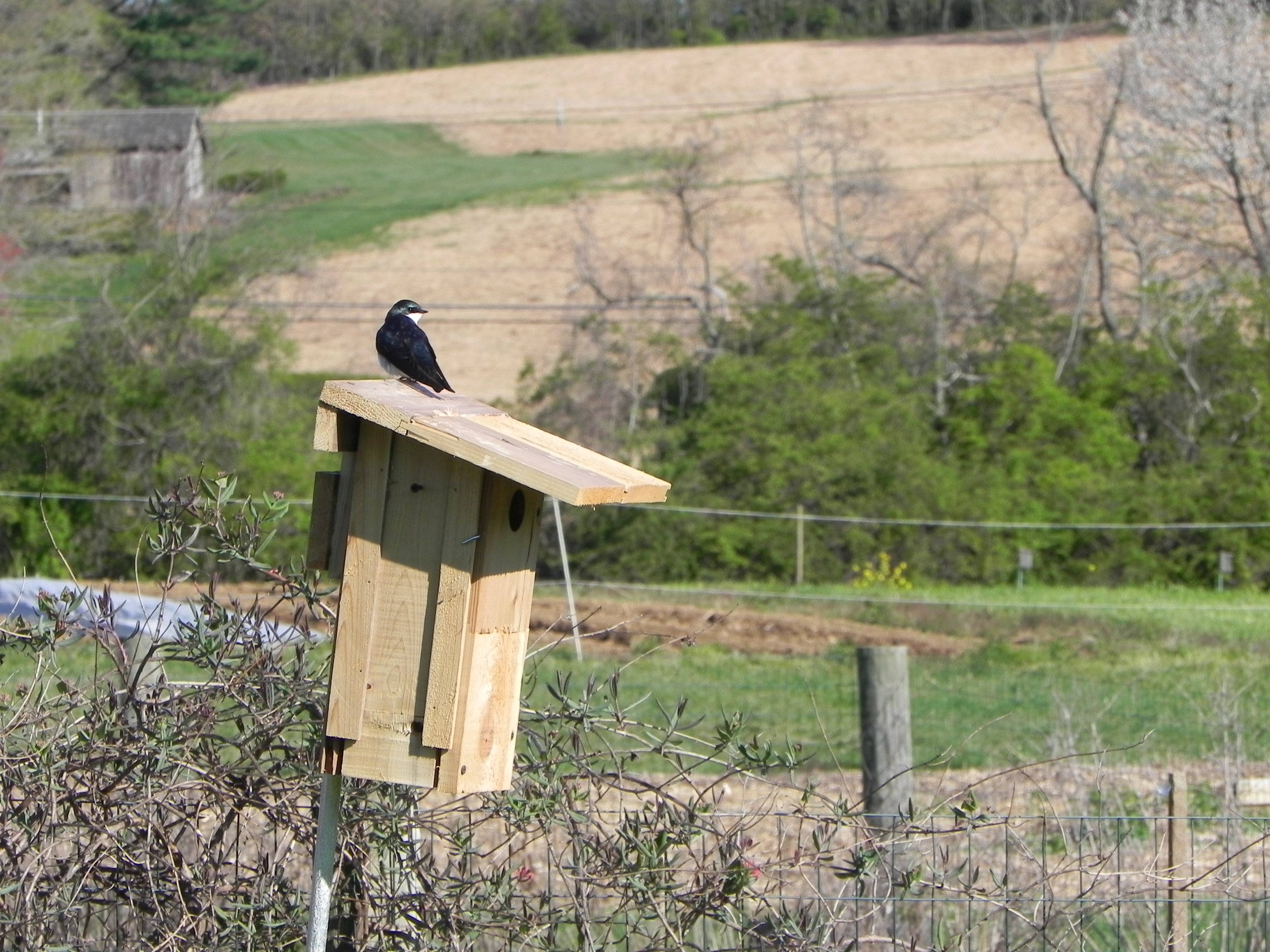
The office air is getting stale and we are excited to get back in the field amongst the birds and the land! The handsome Tree Swallows arrived at the farm a couple of weeks ago in their tuxedos and are beginning to claim their real estate (and their women!). The bluebird guys are stunning the lady blues with their breathtaking plumage and lovely, stammering songs. Brilliant red Northern Cardinal males are enjoying this time before the leafout when they can sit on conspicuous, still bare branches and sing their hearts out to their mates.


Purple Martin scouts have returned to the Willistown area from South America and will continue arriving in the coming weeks. Northbound flocks of Palm and Yellow-rumped Warblers are moving through along with some Pine Warblers, kinglets and even Hermit Thrush. Purple Finches are showing up at bird feeders around the area, so be sure to look twice at the birds you think are House Finches. Eastern Phoebes are investigating houses, porch lights, bridges and other man made structures on which to build their nests. Eastern Towhees are noisily scratching around the leaf litter looking for seeds, berries, spiders, insects and snails and telling us, “Drink you Teea!!”
Some early birds have been busy for awhile now: Great Horned Owl chicks in the area are leaving their nests, and Black Vulture chicks will be hatching soon!


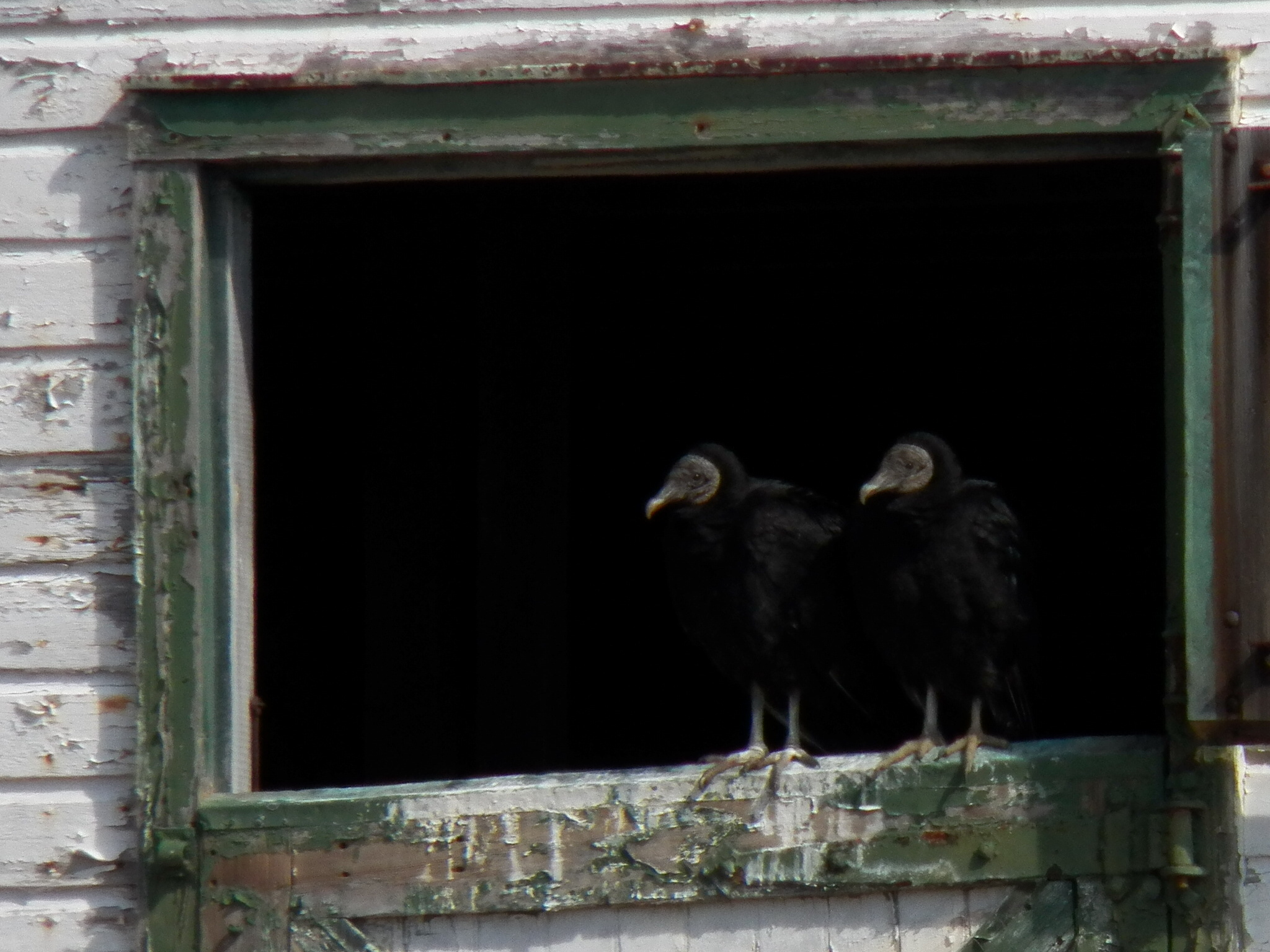
Other migratory birds are still on their way: House Wrens, Baltimore Orioles, Scarlet Tanagers, Wood Thrush, Ovenbirds, Catbirds, Indigo Buntings and bushels of warblers galore! As we move deeper into spring migration, remember to help us document the new arriving bird species on our “Bird Species Seen in 2013″ checklist, which is located on our website here. Last year, 170 species were reported in the Willistown area. Help us beat last year’s total!
Oh and get your hummingbird feeders back out (if you ever put them away) because they are zooming over the Gulf of Mexico as we speak!

There are even still some reports of Western hummingbirds, like Rufous, in the state. This past fall/winter was a record with over 90 Western hummers reported in Pennsylvania, one of which was right here in Devon, PA. These hummingbirds are evolving new migration routes by passing on a genetic defect that causes them to want to migrate east instead of south for the winter. With the relatively mild winters we now have and the help of birders keeping their hummer feeders up all winter, these “defective” Western hummers can make it through the winter in the East and then go back to the West to make more “defective” hummers. Specially certified banders have been banding these vagrant hummingbirds to learn more about this phenomenon. Watch this Audubon at Home video to witness the banding of an Allen’s Hummingbird in suburban Philadelphia, November 2012.

Northern Saw-whet Owl Banding – 2012 Season Summary
Last Fall was not only a record for Western hummingbirds in PA but also for southbound Northern Saw-whet Owls. We banded 263 new saw-whet owls in 7 weeks of banding from October through November plus recaptured 42 owls that were already banded (called retraps), including our own owls and 9 “foreign” owls (originally banded by other stations). Unlike the Western hummers in PA, these little migratory owls were not “defective”; they were simply doing what they are supposed to do, in larger numbers than usual! Saw-whet owls breed in high elevation coniferous forests in the Appalachian mountains, the mountains of the Western U.S. and throughout Canada and Alaska. In the fall they migrate through our area (with some overwintering) and can travel as far south as Alabama.

The reason there were so many more saw-whets in 2012 as compared to previous years (we banded 34 owls in 2011 and 91 in 2010) is because it was an atypical irruption year. It was a productive summer in the north for the pine trees, which produced many seeds, which in turn supported a healthy rodent population. This set the stage for the production of huge numbers of baby saw-whets, which then got kicked out at the end of the breeding season and were forced to flood south for the winter, a time of food scarcity in the north. About 90% of the owls we banded were hatching year owls (owls born that summer). About 70% of the total catch were females, which is presumably because the adult males prefer to stick out the winter on their northern territories that they worked so hard to establish.

We had several notable discoveries during our 2012 season of owls. One foreign bird that graced our nets was a female banded at Drumlin Farm in Massachusetts in October of 2007! A 5 year old owl is big news, since we mostly get only young owls. One hatching year owl traveled 65 miles north to us from a banding station in Chestertown, Maryland in 4 nights….I guess it back-tracked when it heard about the five-star organic mouse buffet, called Rushton, that it missed on its way down the flyway!

Some of our owls ended up at other banding stations as well. One female that we banded as a second year bird in November 2010 showed up this year near Blue Mountain! Another of our banded owls was retrapped at Lake Ontario, Canada, and we’ve exchanged many owls with Scott Weidensaul’s multiple stations north of us in PA. To learn more about the fascinating world of saw-whet owls and saw-whet owl banding, a MUST READ article is Dark Moon Traveler in Natural History.
Beauty in the Brambles Workshops
Successional Shrub Habitat is the “in between habitat” that exists before a meadow becomes a woodland. Composed primarily of shrubs, these important habitats are threatened in Southeastern PA because many landowners clear these areas, seeking a more suburban manicured look. Our workshops are meant to help people understand and consider the ecological value of these habitats for birds and other wildlife and learn to see the unconventional beauty these places hold.

During these educational workshops, we’ll discuss the value of shrub habitats to birds, explore options for management on preserves and your own property, and see some of the bird species that depend on this special habitat. These workshops will be held by Audubon Pennsylvania, Valley Forge Audubon Society and the Willistown Conservation Trust at preserves within our program area where Successional Shrub Habitat models have been established.

We hope our efforts will help landowners, property managers, landscapers and the general public consider the “Beauty in the Brambles” when faced with decisions to clear habitat. Why not simply leave it (or at least part of it) alone and enjoy the life it supports? We have enough to clean inside our houses…why spend energy and money tidying up every single inch of our properties to resemble biologically barren lawns when habitat loss is the leading cause of decreased biodiversity today. As the human population continues to take over the earth, it’s becoming more urgent that we become more considerate stewards of the land and better neighbors to our fellow creatures.
We’re not asking people to get rid of their lawns completely, but rather to consider saving (or even creating) a corner or two filled with wonderful shrubs for the birds! Remember when all of the habitat is gone and there are no birds left, spring will be a very sad and lifeless cake with not a speck of icing!
We have already lost half of the songbirds that filled the sky just 40 years ago, according to Bridget Stutchbury in her new book, “Silence of the Songbirds”.
If you haven’t already, please read more about our “Beauty in the Brambles” Successional Shrub Habitat initiative for the birds in my past blog post called “WCT Gives Thanks for a National Grant from Audubon and Toyota.”
You can also learn more about the importance of this bold new habitat initiative by checking out our enlightening “Beauty in the Brambles” brochure, which is available to thumb through electronically on the Audubon and Toyota TogetherGreen blog!
Hope to see you at one of our workshops! They’re short and fun plus you’ll get free food, new knowledge and a native shrub that birds love!
WCT Rushton Birds are NOW TWEETING!
Follow the Rushton Banding Station on Twitter to receive instant news live from the field at Rushton Woods Preserve and Farm. I’ll let you know how the mornings are going, if significant numbers of birds are hopping into our nets, and if we are banding significant or uncommon species, like Connecticut Warblers. If you already have a Twitter account, simply search for “WCT Rushton Birds” and click “Follow.” If you don’t have a Twitter account, go to Twitter.com and set one up today by choosing a username and password.
Enjoy the spring! There’s a lot going on in the woods…
Blake
- 1
- 2
- 3
- …
- 5
- Next Page »

